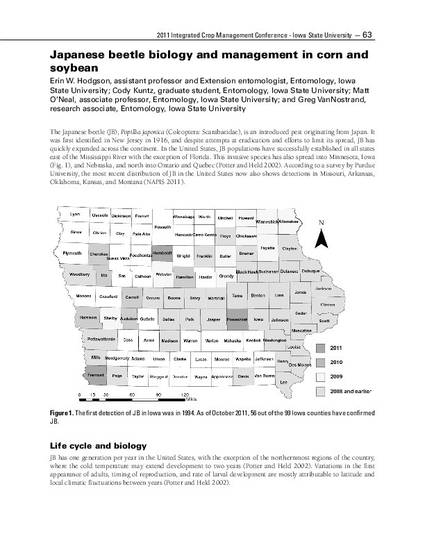
The Japanese beetle (JB), Popillia japonica (Coleoptera: Scarabaeidae), is an introduced pest originating from Japan. It was first identified in New Jersey in 1916, and despite attempts at eradication and efforts to limit its spread, JB has quickly expanded across the continent. In the United States, JB populations have successfully established in all states east of the Mississippi River with the exception of Florida. This invasive species has also spread into Minnesota, Iowa (Fig. 1), and Nebraska, and north into Ontario and Quebec (Potter and Held 2002). According to a survey by Purdue University, the most recent distribution of JB in the United States now also shows detections in Missouri, Arkansas, Oklahoma, Kansas, and Montana (NAPIS 2011).
Available at: http://works.bepress.com/erin_hodgson/263/
